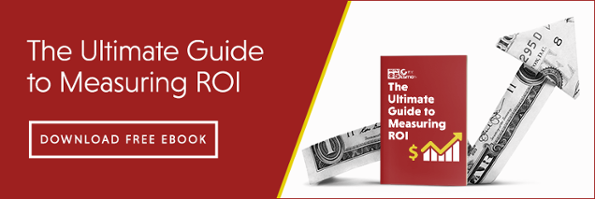
Have you recently completed a marketing campaign and are wondering how to calculate your ROI? With any type of marketing, it's essential to identify your return on investment. This is a fundamental point, but not all businesses keep it in mind to the extent they should. When measuring your ROI, you have to know what to measure and acquire the right tools or services to do so. Let's explore some of the most important principles and tools for determining ROI. In this blog post, we'll be looking at how to collect relevant data, calculate cumulative costs, and interpreting the results.
What to Consider When Determining ROI
When measuring your return on investment, there are several elements to calculate.
- Goals - Each campaign has its own goal or goals. You may be trying to acquire new customers or increase sales. In some cases, your goal may be to inform readers, establish your expertise, or raise awareness about your business.
- Time Spent on the Campaign - You can't overlook time when calculating ROI. Time is a valuable resource that must be measured every step of the way.
- Production Cost - What are the costs associated with creating the campaign? This includes paid tools and software as well as employees, freelancers, or agencies you're paying.
- Cost to Run Ads - For television advertising campaigns, you need to track the costs for ads. For example, how much did it cost to run your ad at a certain frequency on your preferred channels and times?
Equations to Calculate ROI
The simplest ROI formula is:
Return - cost/investment x 100
In other words, return minus cost divided by investment multiplied by 100. For example, suppose you invest $100 into a campaign, spend $80, and get a return of $120. This would be 120 - 80 / 80 x 100 = 50. So your ROI for this campaign would be 50%.
It's critical to realize that for any ROI formula, your results are only accurate if you include all the relevant data. For example, if you forget to consider all of your costs for a campaign, you'll have an inflated ROI.
What is a Good ROI?
What is considered a good marketing ROI? A typical rule of thumb is that you want to earn at least a dollar for every dollar spent. That said, there are many factors that determine what is a good ROI for you.
- Your industry - Certain industries typically produce a higher ROI than others.
- The type of campaign - Social media ads, Google ads, email campaigns, and other types of marketing have their own ROI. This will vary according to your skills, experience, budget, and industry.
- Your history - One of your main goals with marketing is to improve your results over time. Thus, if your ROI for ad campaigns was 5% last year, 8% this year would be an improvement. You have to interpret your current and future results in relation to your past results.
It's easier to calculate ROI for certain types of campaigns than others. With paid advertising, you know how much you're spending and how much you're getting in return. Content marketing, on the other hand, can be harder to measure. You may be gaining benefits such as exposure and credibility that don't necessarily translate into immediate sales. However, when you are working with an experienced media partner, they are able to help you determine your ROI through the data they collect.
Getting the Best Possible ROI
Determining your ROI is crucial for all of your marketing efforts. Fortunately, there are many tools that make it fairly simple to calculate digital ROI, from Google Analytics to a spectrum of tools and services offered by a media partner. Working with a media partner that has experience in all aspects of marketing and measuring ROI can save time and reduce your learning curve. When you take on a media partner, they can help you make sure you're fully aware of your costs and ROI for each campaign.






